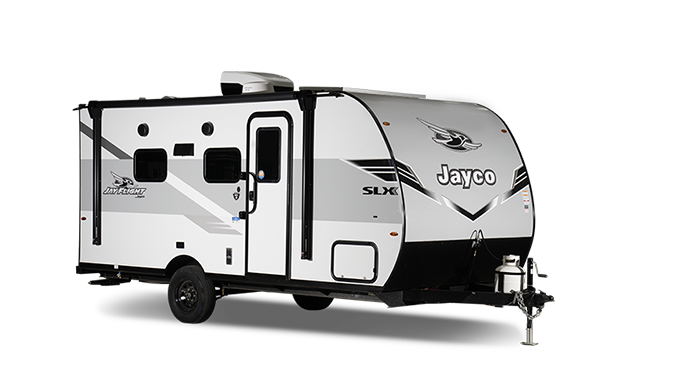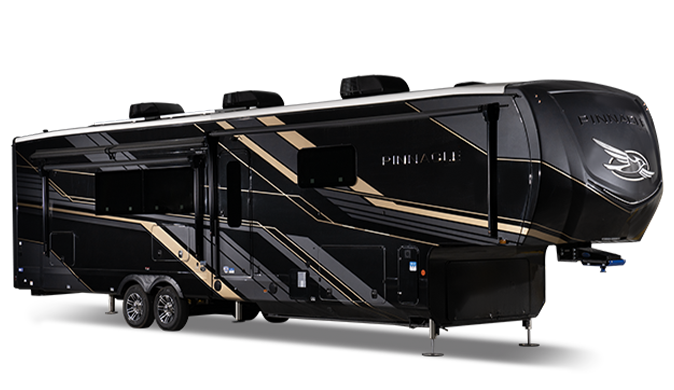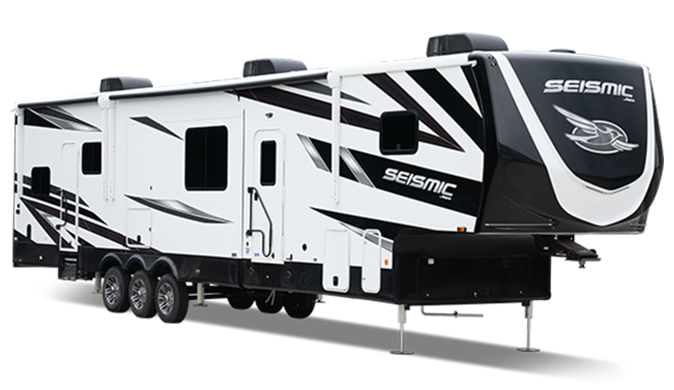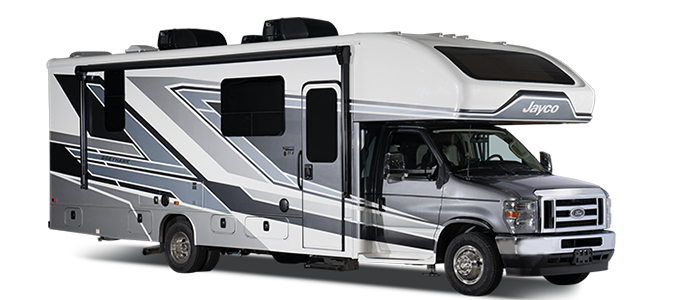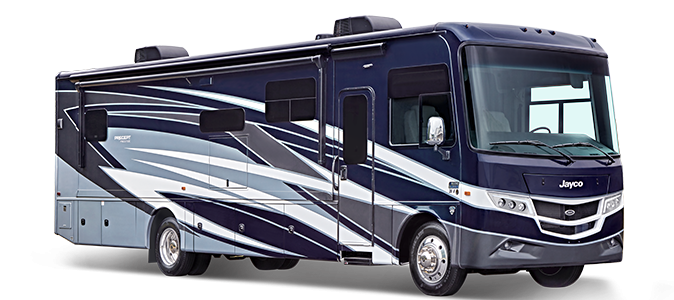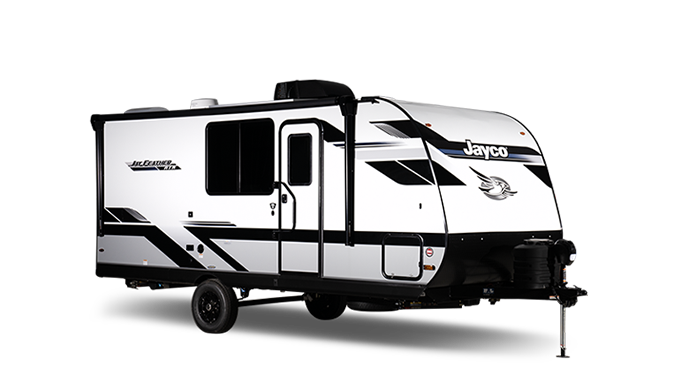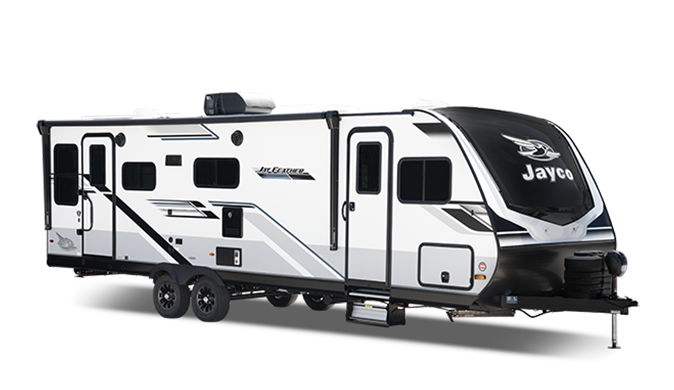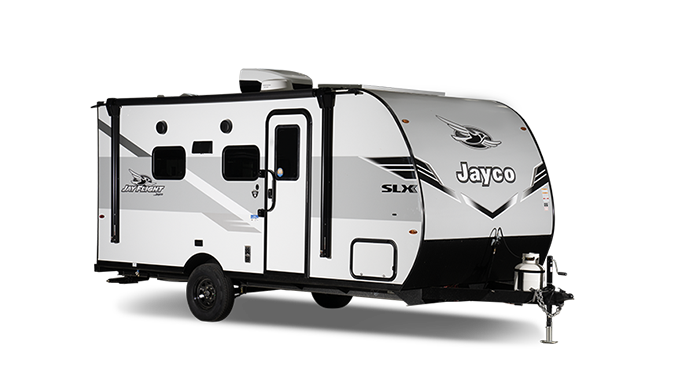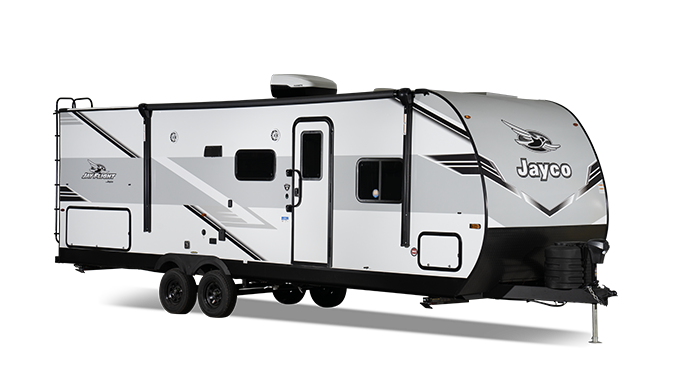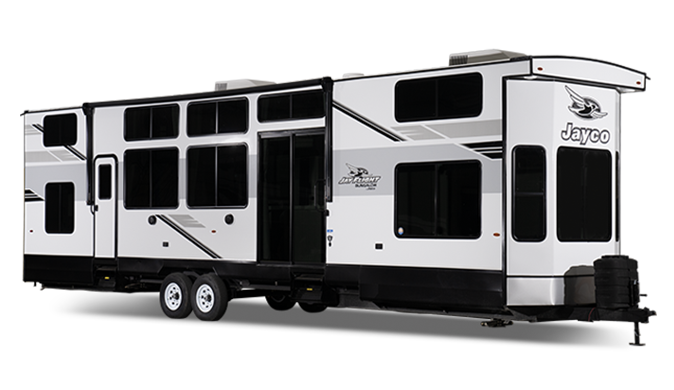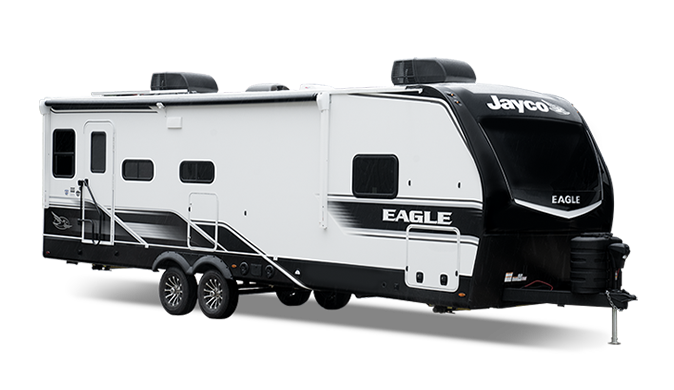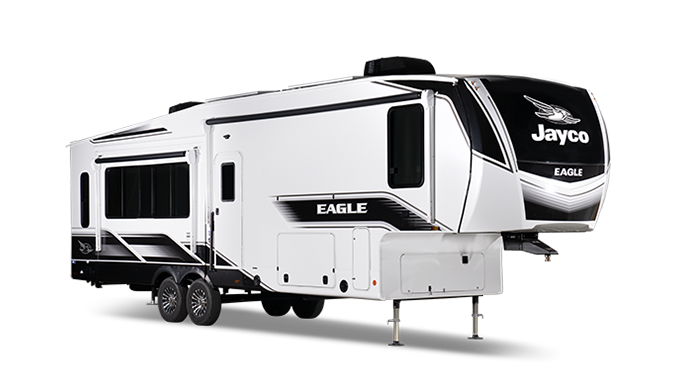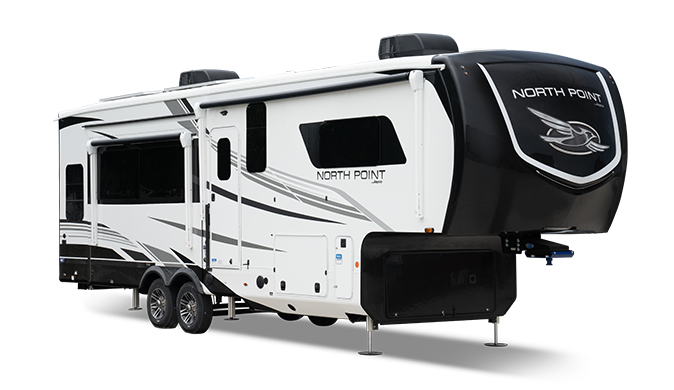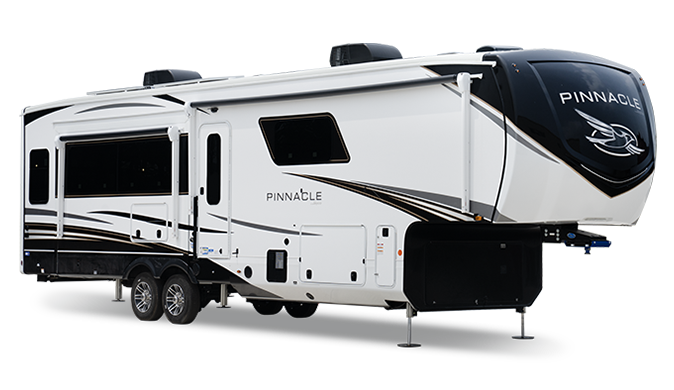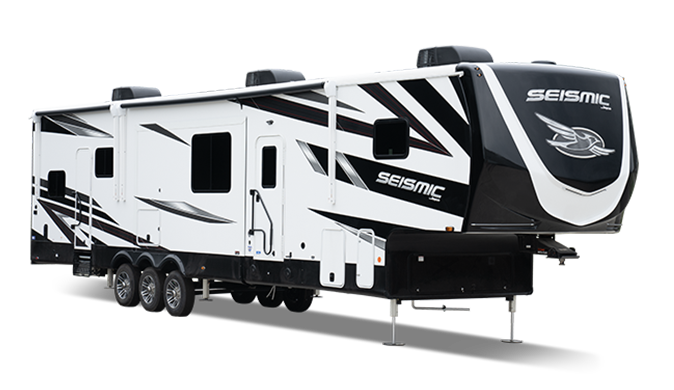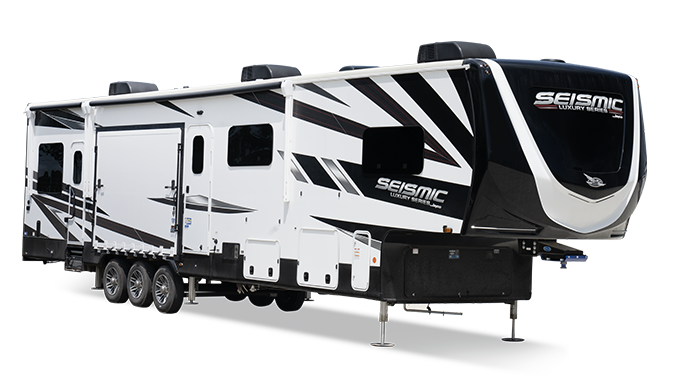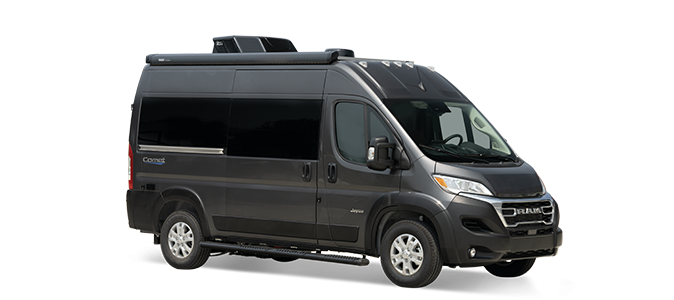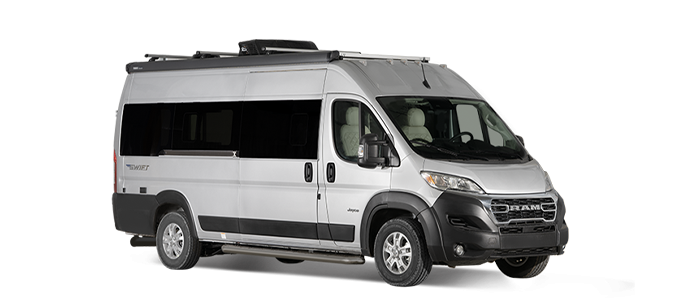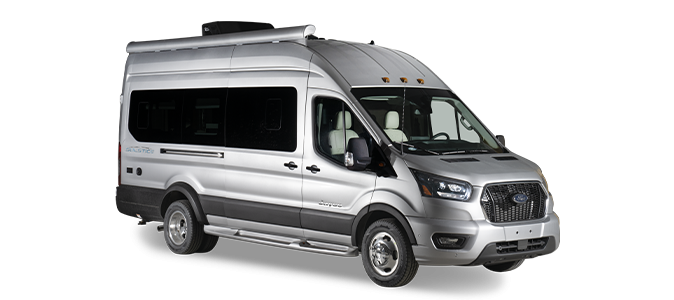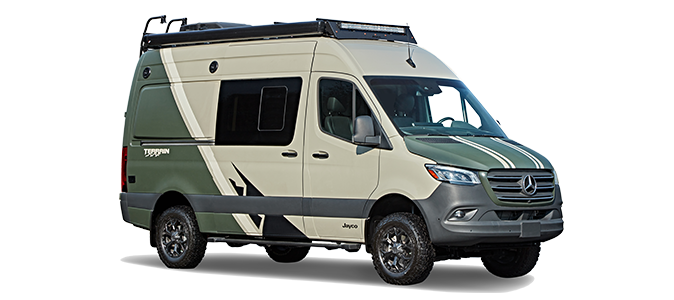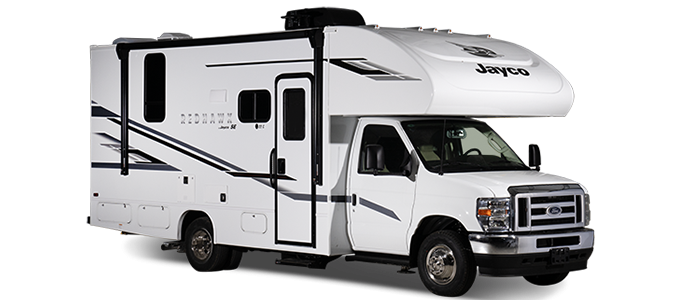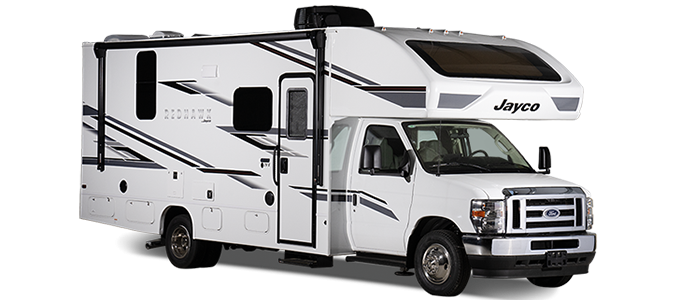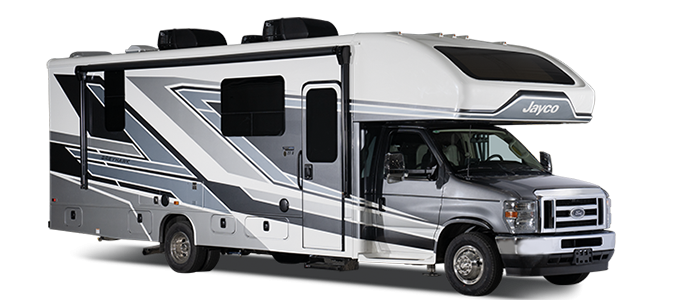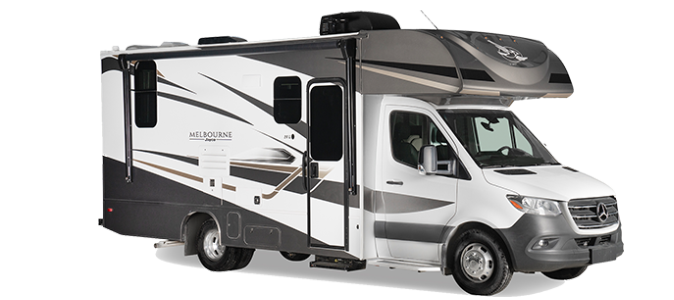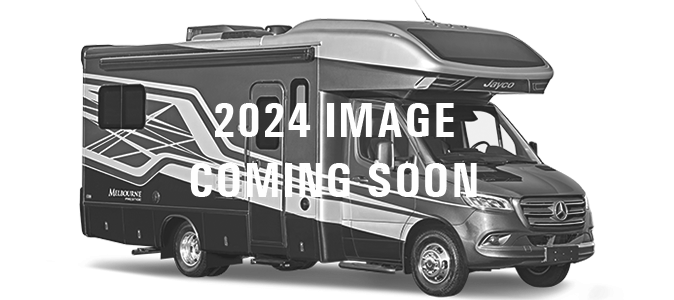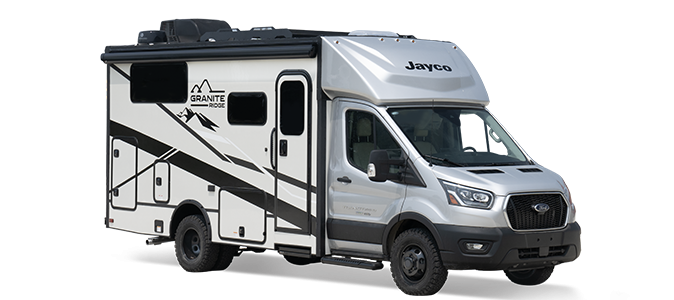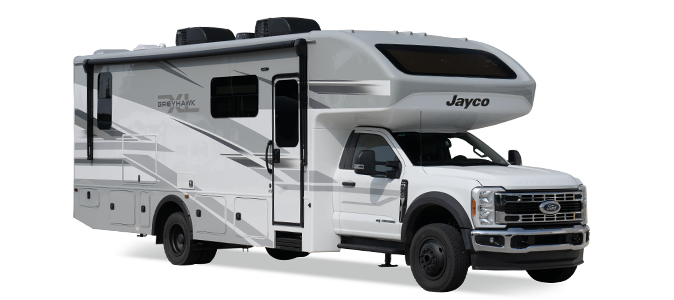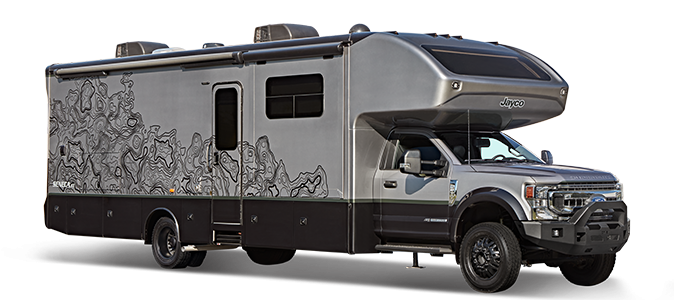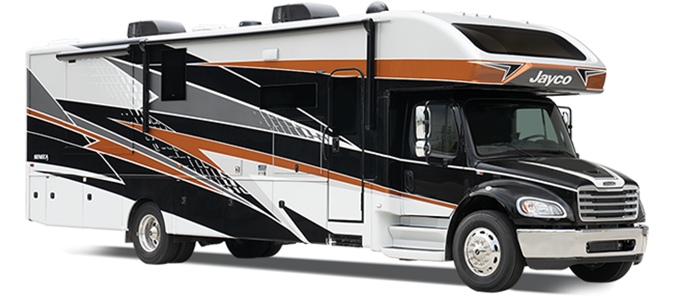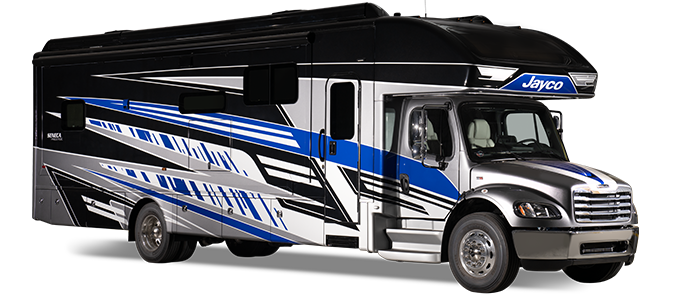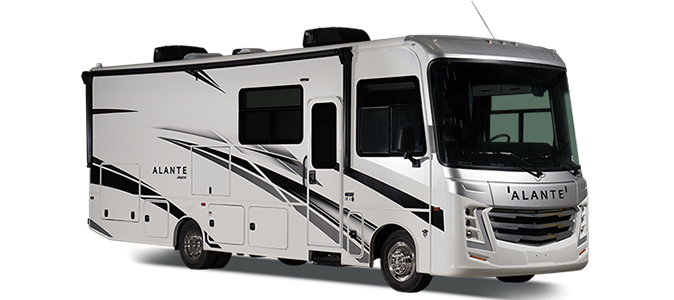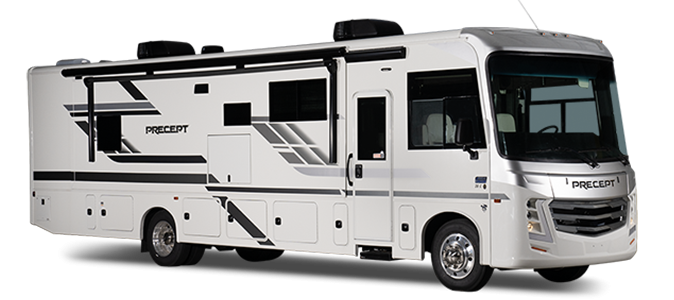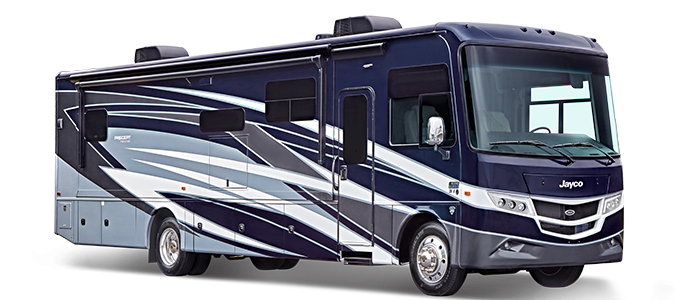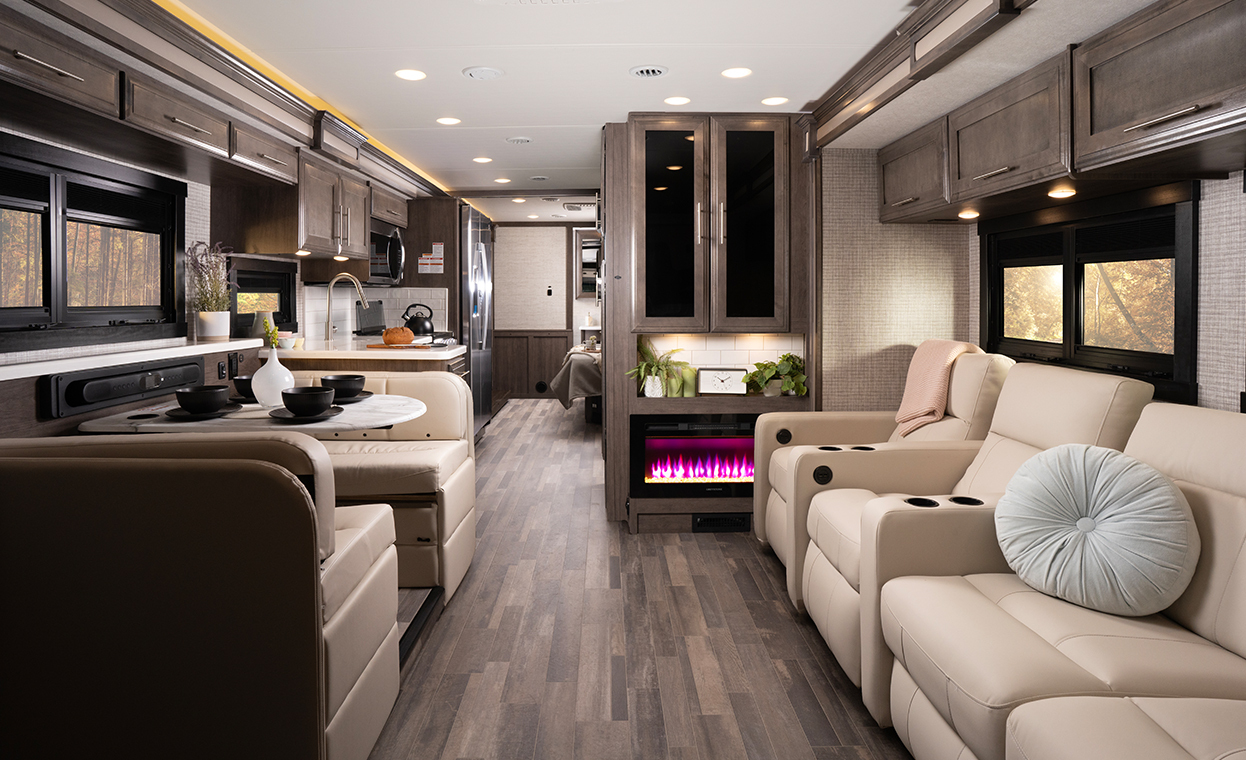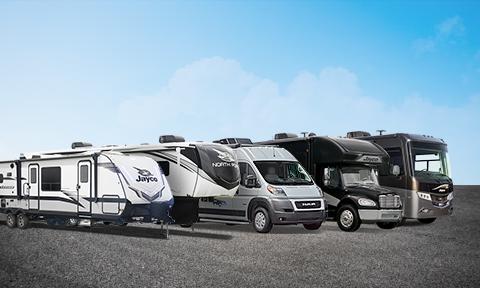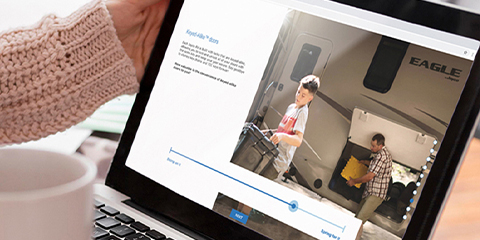For many, simply getting your RV ready for the new camping season is one of the best ways to put winter doldrums in the rearview mirror. With a plan and the right perspective, the process can be fun! And following a few simple steps goes a long way toward making the most of your time on the road. Here are a few pointers to get you up and running.
1. Start by Prepping Your RV
After months, or even a few weeks, of hibernating, it’s best to give your motorhome or travel trailer a good old fashioned check-up before heading out on the road. The more care you dedicate to this process now, the more time you’ll save when the time comes to hit the road this season.

Springtime RV Maintenance Checklist
So where do you begin? Well, we’ve put together a handy dandy checklist of helpful ways to wake your RV up from winter hibernation, but here’s the quick overview:
- Check the exterior of your RV for any damage. This includes checking your propane tanks, 12-volt battery/batteries, the roof area and running any necessary tests of your gauges and systems.
- Check your shore power outlet and cord to make sure it’s not frayed and there are no metal wires exposed on the cord itself.
- Check your tires to make sure they’re ready to tow. If you’re not sure if you need to inflate them, you can find the recommended PSI information on the sidewall of the tire.
- Check inside your RV for any unwelcome winter guests, like rodents or pests, and clean all appliances. Clorox and similar commercial wipes are great for this. You may also want to let the refrigerator run for a day or two before traveling.
- Check the trailer’s safety systems, detectors and batteries. And definitely note that battery-powered detectors must get new batteries at the beginning of each season.
- Check interior lights, gadgets and water lines. It’s always good to test everything after your RV has been sitting all winter.
- Check your propane lines and make sure you can fire up the furnace and other propane appliances. Since your propane has been off over winter, you may need to give it some time for the gas to refill the lines.
- Don’t overlook the small stuff. Keep in mind that, Mother Nature, the kids, and the furry friends, may all introduce some natural wear and tear. By touching up a ding here or tightening a screw there or replacing a light bulb at the beginning of the season, you’ll help prevent disruptive issues on down the road.
 Stock Up!
Stock Up!
You can save time throughout the season by loading up your rig with the supplies (non-perishable, of course) you know you’ll be needing throughout the year. That process starts by knowing exactly how much storage you’ve got to work with, maximizing by organizing, and maintaining a balanced load.
If you’re a total newbie, learn from experienced RVers by finding sample stocking checklists online. Adapt them to fit your needs and adjust each year until you have your perfect stocking list. As you load items into your RV, consider adding new storage solutions to maximize the orderliness and convenience of your new space. And get creative! Think tic tac boxes for your spices, economical hanging solutions for your wardrobe and how to maximize shelving arrangements.
2. Choose Your Destinations
First, consider your dates—are you traveling at the edges of camping season—spring or fall? Or, are you going away at the peak of the heat, in July or August? In order to make the most of the warm weather, consider the following approaches:

Gain Some Altitude
Elevation keeps air temperature lower than a location’s proximity to the equator or general regional climate might suggest. So as you climb, you can do away with as many as 5 degrees for every 1,000 feet in altitude. If you visit, say, Rocky Mountain National Park in Colorado or Adirondacks Park in New York, get ready to see stunning vistas in relative comfort.

Gain Some Latitude
In the southern U.S., temperatures can soar during the summer. Farther north, though, you can find respite from the sun’s rays in the lake- and evergreen shade-rich Northwoods of Wisconsin. Or, consider Acadia National Park, a beautiful haven for nature in Maine—our friends, the Puglisis, wrote all about their experiences near Acadia: family-friendly activities, some awesome hikes and places to camp and eat.
 Go Coastal
Go Coastal
There’s a road named after a coast—the Pacific Coast Highway in California—and it’s famous for its ocean views. With those visuals come breaks from the midsummer temperatures. Breezes from the water—which heats more slowly than the adjacent land—cool the air and make warm locations more pleasant. From southern California to Washington, the west coast offers a smorgasbord of natural beauty, with roadways that welcome your RV.
 For Spring and Fall
For Spring and Fall
If your schedule works better with beginning- or end-of-season trips, the beautiful parks of the south—Arkansas is, after all, known as the Natural State—will be more comfortable than in the middle of the summer. Western locations beckon, too, with their large skies and mountain-cut horizon. There’s a reason some of the nation’s most cherished telescopes are found in the west—the night sky stretches nearly from horizon to horizon with the twinkling light of stars.
3. Plan Your Trip
Pick A-List Activities in Advance
Invite everyone in the family to select their absolute must-sees or must-dos, and make sure your final list includes something from everyone. The kids will love being involved and seeing their ideas come to life!
 Make Meals Flexible
Make Meals Flexible
While today’s RVs offer top-of-the-line cooking amenities inside and out, don’t feel like you need to overcomplicate things, but definitely consider what you’ll eat in advance. Items like oatmeal, cereal, tuna, and peanut butter provide ample energy, are shelf stable and reduce what you buy before each trip. Prep meals in advance and freeze them in a Ziploc bag—ziti or white chili, for instance—and you’ll have variety to keep everyone happy without spending too much time cooking at camp.
 Organize Your Information
Organize Your Information
The more you plan, the more information you’ll accumulate. Stay organized. One simple approach is to create categorized folders in a cloud-based file-hosting service such as Google Drive or Evernote. Store your itinerary as well as details about the RV parks you’ll visit. Having everything handy and quickly accessible with intuitive structure can help your navigator assist when you’re driving via his or her mobile phone.

